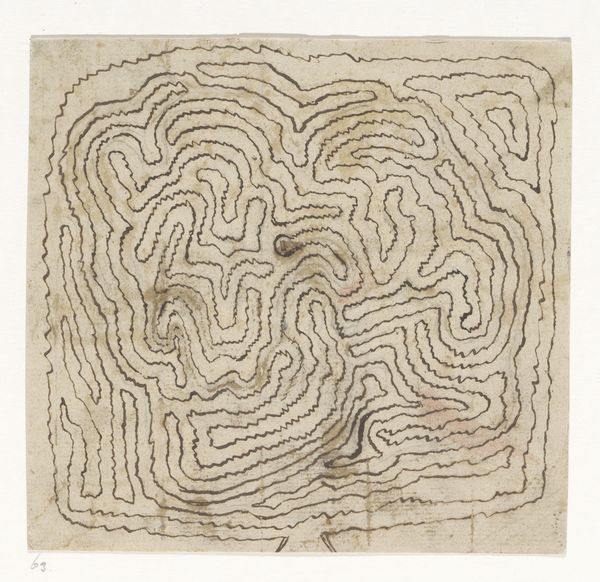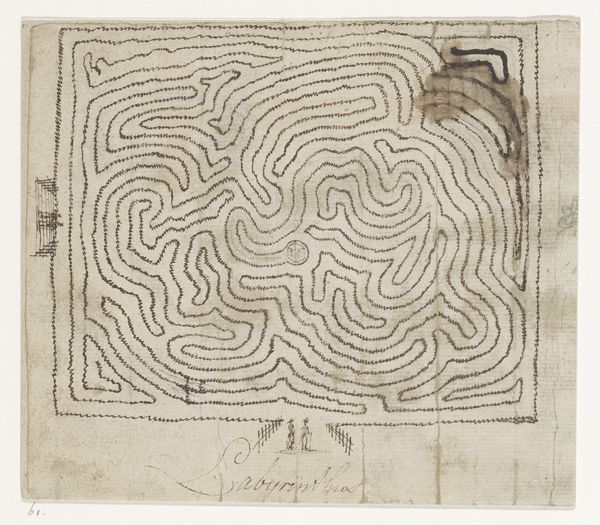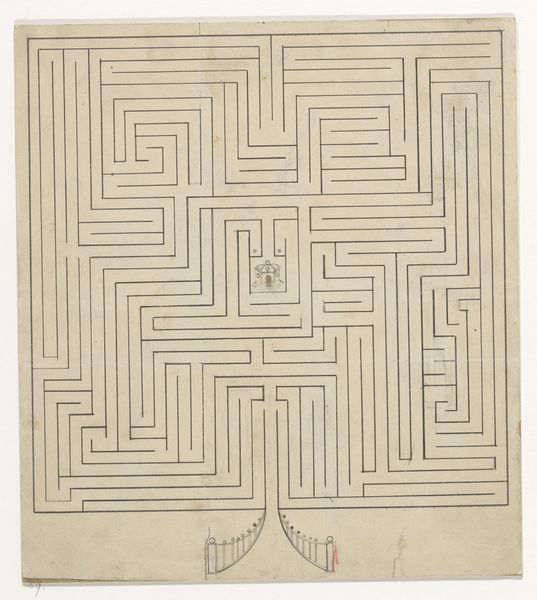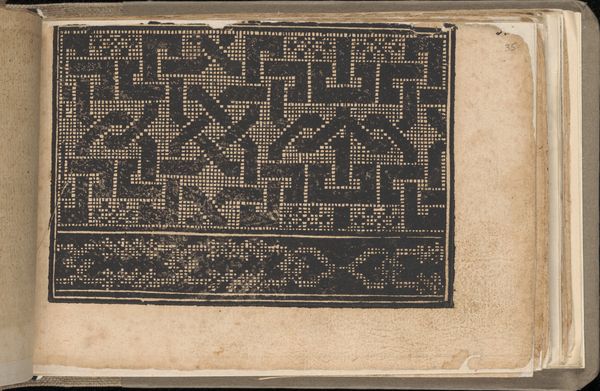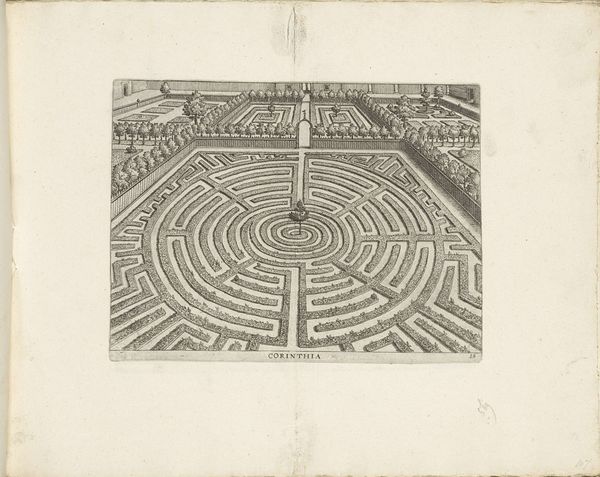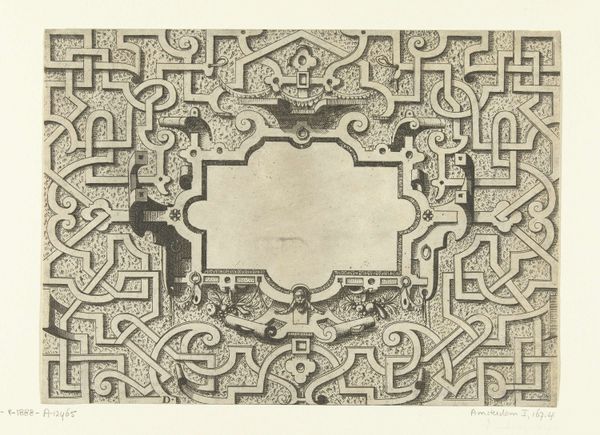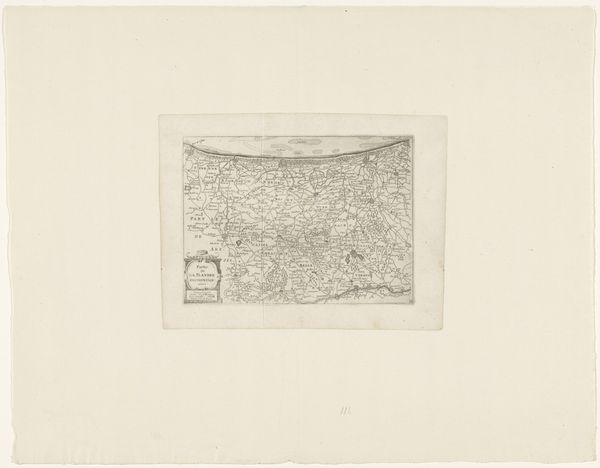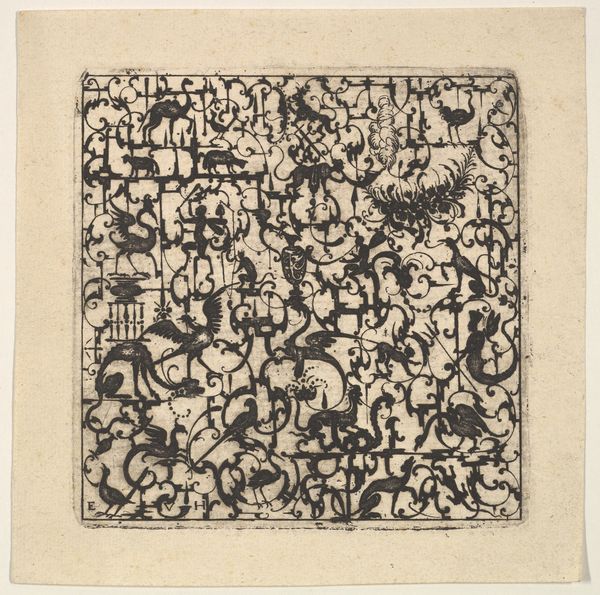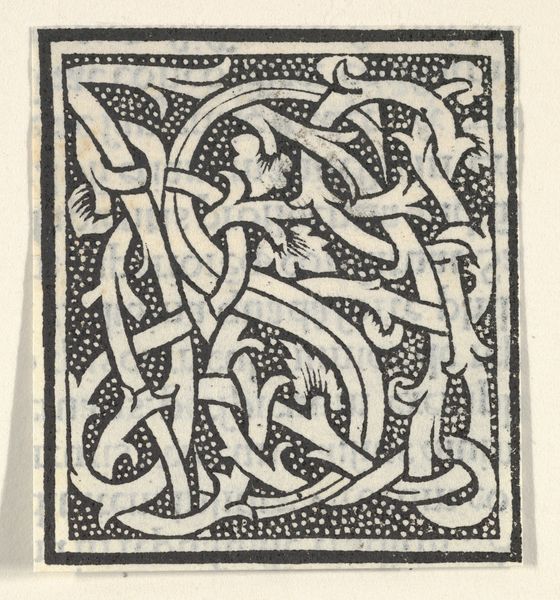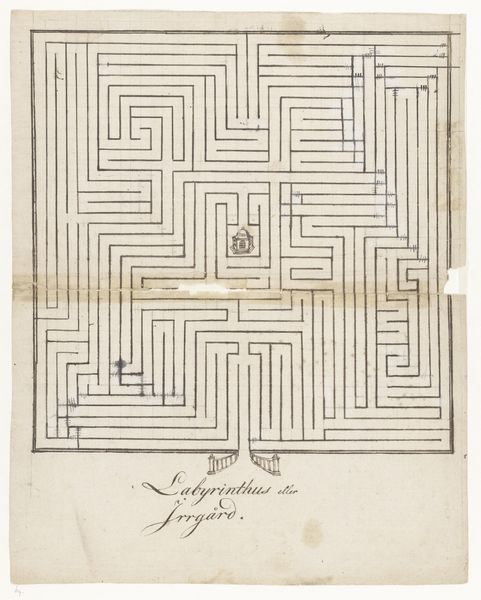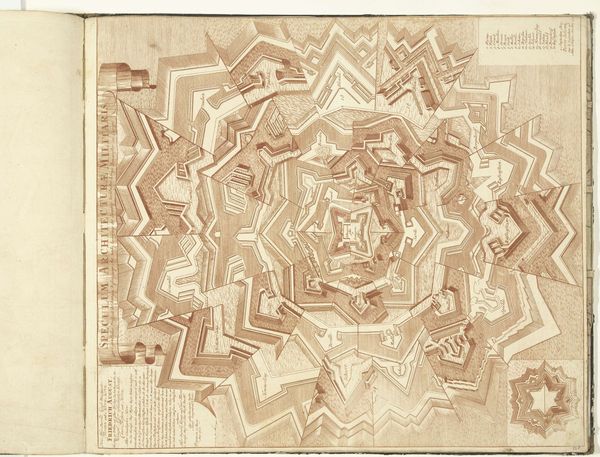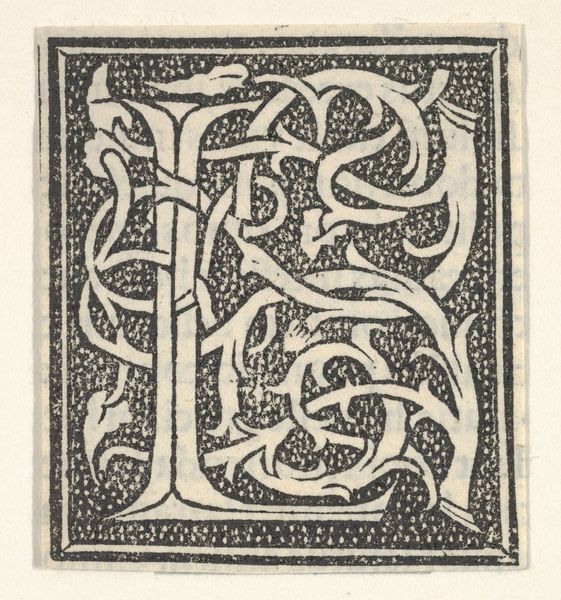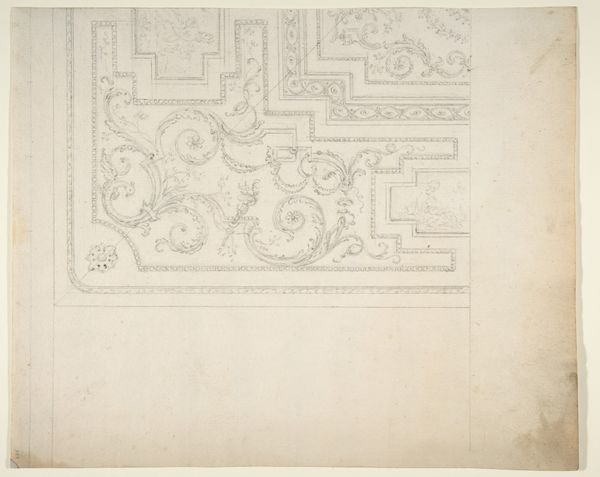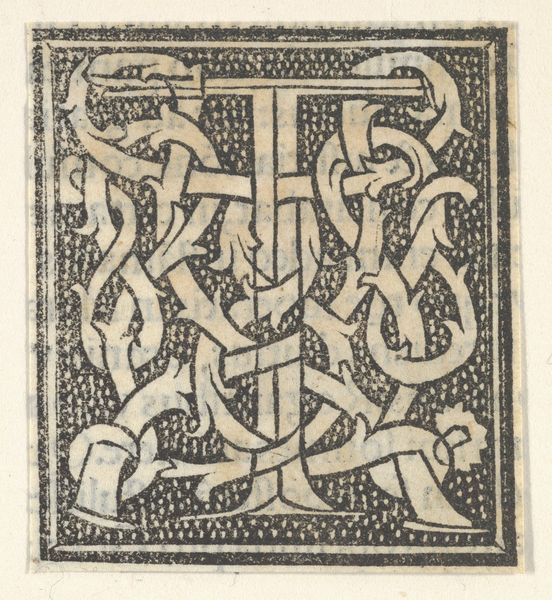
drawing, print, etching, intaglio, paper, ink, engraving
#
drawing
#
organic
# print
#
etching
#
intaglio
#
landscape
#
paper
#
ink
#
linocut print
#
organic pattern
#
geometric
#
geometric-abstraction
#
line
#
engraving
Dimensions: height 155 mm, width 150 mm
Copyright: Rijks Museum: Open Domain
Jan Brandes created this maze drawing in the late 18th or early 19th century in the Netherlands. At the center of the labyrinth, Brandes drew what appears to be a building. Mazes were popular motifs in the early modern period. Aristocrats often had hedge mazes built on their estates as fashionable entertainments and displays of wealth. The maze was a symbol of aristocratic power. The image resonates with social and institutional themes: who is in and who is out? Who is granted access to this place? To interpret this maze, we can draw on various historical and cultural sources. We might research the history of garden design, the symbolic meaning of mazes in the 18th century, and the life and work of the artist himself, whose career was rooted in the drawing of landscapes, and architectural fantasies. Art is always contingent on its social and institutional context.
Comments
No comments
Be the first to comment and join the conversation on the ultimate creative platform.
